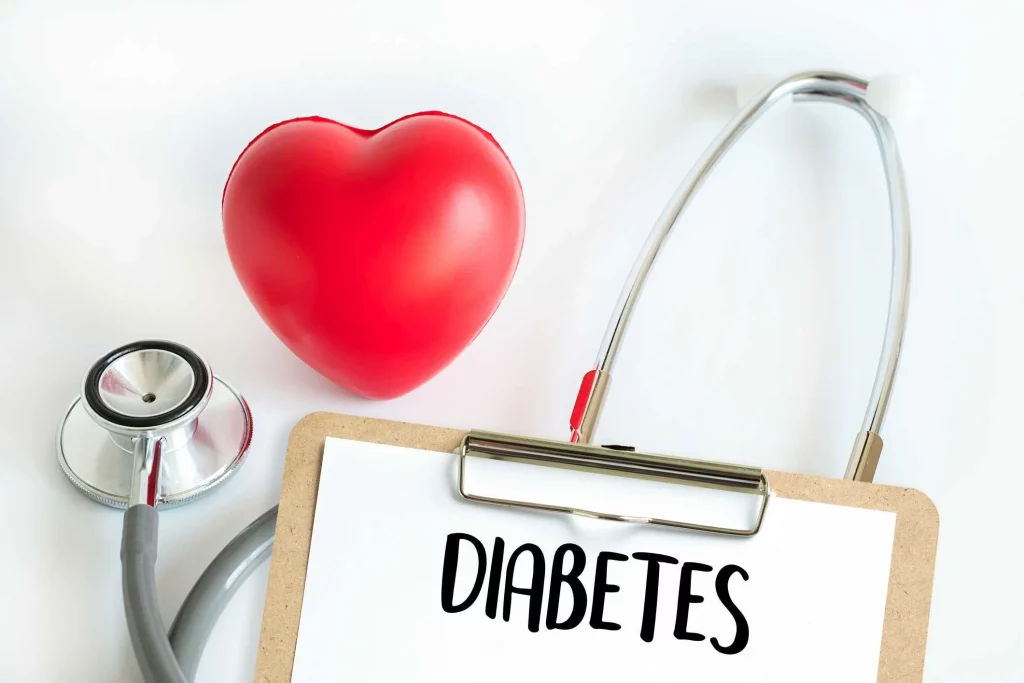If you are experiencing any of the following symptoms, it may be time to undergo a diabetes screening and it is signs that your type 2 diabetes is getting worse and you need to act promptly to take control of your blood glucose level:
- There’s Inexplicable Weight Loss Or Gain
- You Feel Thirsty Very Often
- You Urinate Very Frequently
- Dark Urine
- Recurring Infections
- Unexplained Fatigue
- Easy Bruising Or Bleeding
- Changes In Vision
In some cases, these changes may be early warning signs of worsening diabetes. If you experience any of these symptoms and have been diagnosed with diabetes, be sure to schedule a check-up with your doctor or you must start to have medicines for Diabetes. Buy Glucofort
What are the different types of diabetes?
The types of diabetes are:
Type 1 diabetes: This type is an autoimmune disease, meaning your body attacks itself. In this case, the insulin-producing cells in your pancreas are destroyed. Up to 10% of people who have diabetes have Type 1.
It’s usually diagnosed in children and young adults (but can develop at any age). It was once better known as “juvenile” diabetes. People with Type 1 diabetes need to take insulin every day. This is why it is also called insulin-dependent diabetes.
Type 2 diabetes: With this type, your body either doesn’t make enough insulin or your body’s cells don’t respond normally to the insulin. This is the most common type of diabetes. Up to 95% of people with diabetes have Type 2.
It usually occurs in middle-aged and older people. Other common names for Type 2 include adult-onset diabetes and insulin-resistant diabetes. Your parents or grandparents may have called it “having a touch of sugar.”
Prediabetes: This type is the stage before Type 2 diabetes. Your blood glucose levels are higher than normal but not high enough to be officially diagnosed with Type 2 diabetes.
Gestational diabetes: This type develops in some women during their pregnancy. Gestational diabetes usually goes away after pregnancy.
However, if you have gestational diabetes you’re at higher risk of developing Type 2 diabetes later on in life.
Less common types of diabetes include:
Monogenic diabetes syndromes: These are rare inherited forms of diabetes accounting for up to 4% of all cases. Examples are neonatal diabetes and maturity-onset diabetes of the young.
Cystic fibrosis-related diabetes: This is a form of diabetes specific to people with this disease.
Drug or chemical-induced diabetes: Examples of this type happen after organ transplant, following HIV/AIDS treatment or are associated with glucocorticoid steroid use.
Diabetes insipid us is a distinct rare condition that causes your kidneys to produce a large amount of urine.
Diabetes risk factors
Certain factors increase your risk for diabetes.
Type 1 diabetes: You’re more likely to get type 1 diabetes if you’re a child or teenager, you have a parent or sibling with the condition, or you carry certain genes that are linked to the disease.
Type 2 diabetes: Your risk for type 2 diabetes increases if you:
- Are Overweight
- Are Age 45 Or Older
- Have A Parent Or Sibling With The Condition
- Aren’t Physically Active
- Have Had Gestational Diabetes
- Have Prediabetes
- Have High Blood Pressure, High Cholesterol, Or High Triglycerides
- Have African American, Hispanic Or Latino American, Alaska Native, Pacific Islander, American Indian, Or Asian American Ancestry
Gestational diabetes: Your risk for gestational diabetes increases if you:
- Are Overweight
- Are Over Age 25
- Had Gestational Diabetes During A Past Pregnancy
- Have Given Birth To A Baby Weighing More Than 9 Pounds
- Have A Family History Of Type 2 Diabetes
- Have Polycystic Ovary Syndrome (PCOS)
